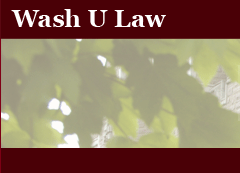Article Title
Owning Up: Determining the Proper Test for Ownership Liability Under CERCLA
Publication Title
Washington University Journal of Law & Policy
Abstract
The most comprehensive environmental statute since the National Environmental Policy Act of 1969, Congress enacted CERCLA to "provide for liability, compensation, cleanup, and emergency response for hazardous substances released into the environment and the cleanup of inactive hazardous waste disposal sites." The statute authorized the EPA to expend agency resources in the cleanup of contaminated sites, and vested the agency with the authority to compel those responsible for contaminations to take remedial action. In either circumstance, the EPA could sue potentially responsible parties (PRPs) to recover the agency‘s financial expenditures. The statute also created the Hazardous Substance Superfund as a repository for PRP contributions and for the monies expended in site remediation.
Under CERCLA, a prima facie case for liability requires a moving party to demonstrate, inter alia, that the defendant falls within one of four classes of PRPs listed in § 107(a) of the statute. These PRPs broadly include: (1) the owners and operators of a vessel or facility; (2) the previous owners or operators of a facility at the time of contamination; (3) persons who arranged for the disposal or transport of a hazardous substance; and (4) those who transported a hazardous substance. Defendants who fall into any of these categories are subject to strict liability and will be held jointly and severally liability for the costs of cleanup. While a defendant might escape liability in limited circumstances, courts generally construe the terms of CERCLA liberally, so as to accomplish the statute‘s goal of effective environmental protection.
This Note argues that a uniform approach is needed, and that a test that looks for discrete factors demonstrating sufficient indicia of ownership, giving rise to de facto ownership, is an appropriate method for determining an entity‘s liability as an owner. Part I of this Note discusses the legislative history of CERCLA. Part II presents the varying methods of analysis used by circuit courts to define a standard for CERCLA ownership, including (1) the site control analysis, (2) the de facto ownership test, and (3) deference to state common law. Part III then compares and evaluates the different court decisions that address CERCLA ownership standards, and posits that a test for de facto ownership is the proper metric for determining ownership liability. Finally, this Note concludes by arguing that a test for sufficient indicia of ownership is appropriate for assessing CERCLA liability because it affords a more consistent application of the statute across federal jurisdictions.
Recommended Citation
James Morrow,
Owning Up: Determining the Proper Test for Ownership Liability Under CERCLA,
43
Wash. U. J. L. & Pol’y
333
(2014),
https://openscholarship.wustl.edu/law_journal_law_policy/vol43/iss1/17
